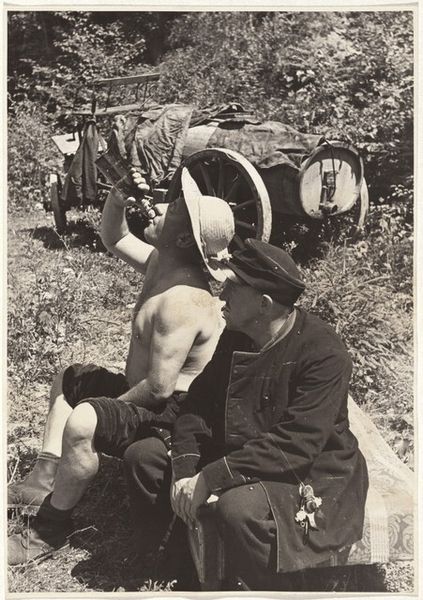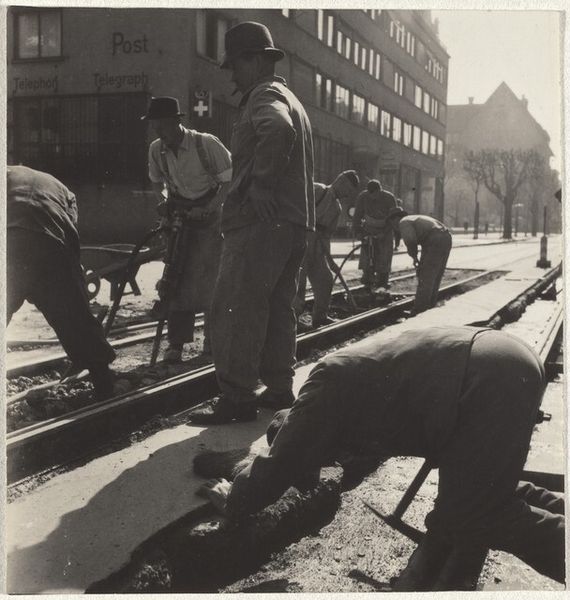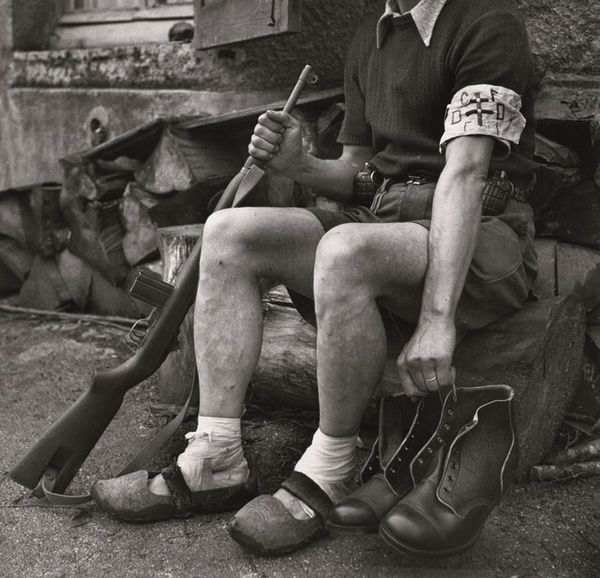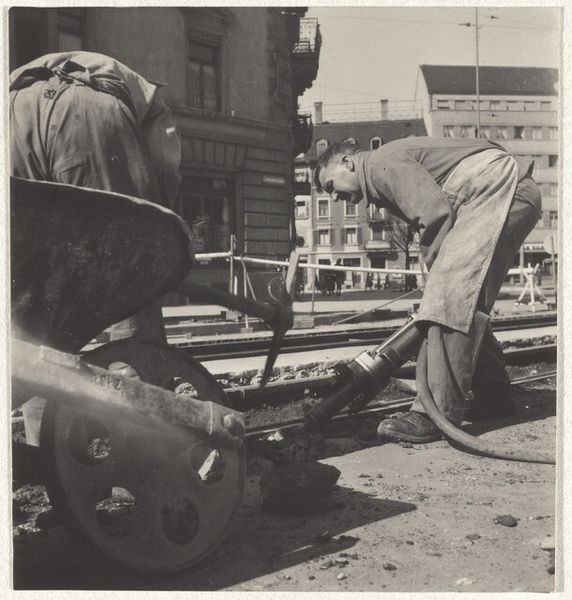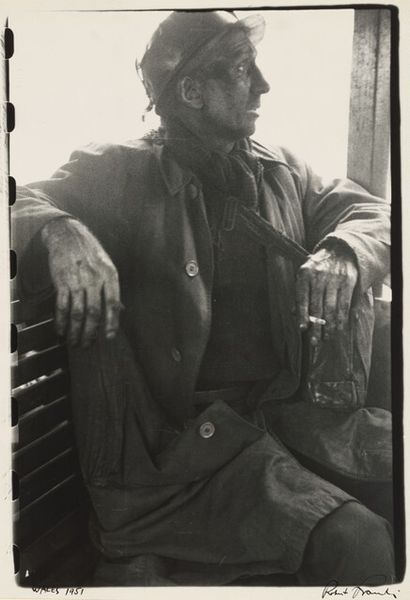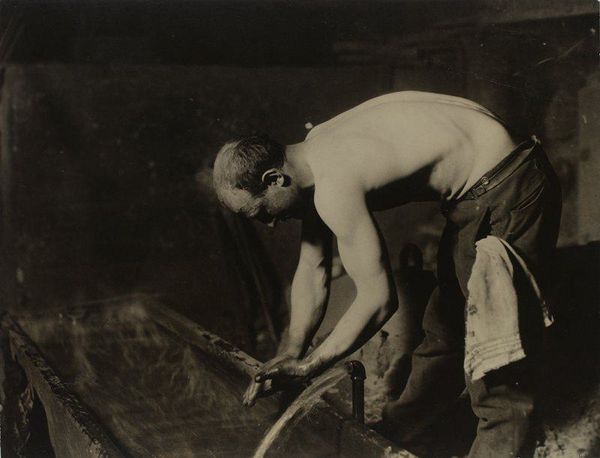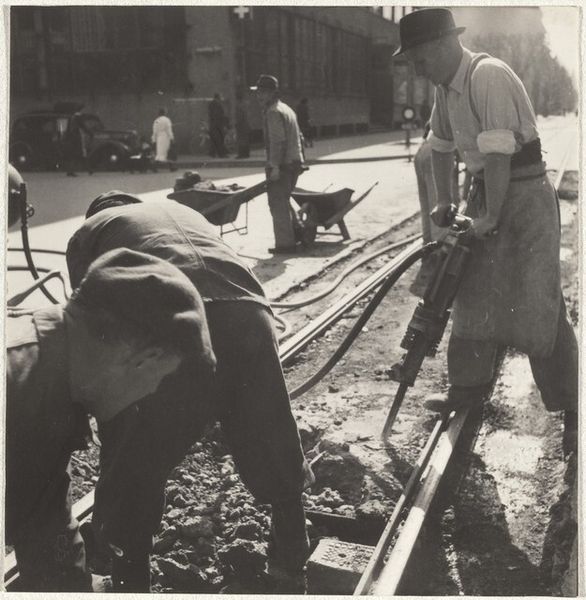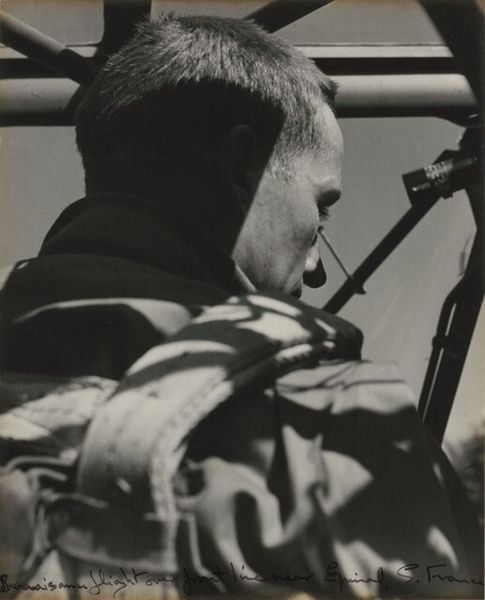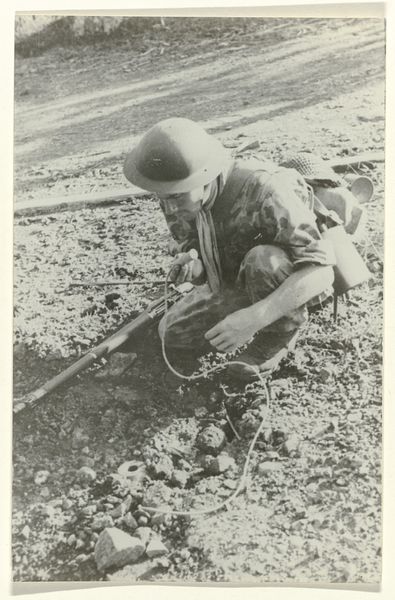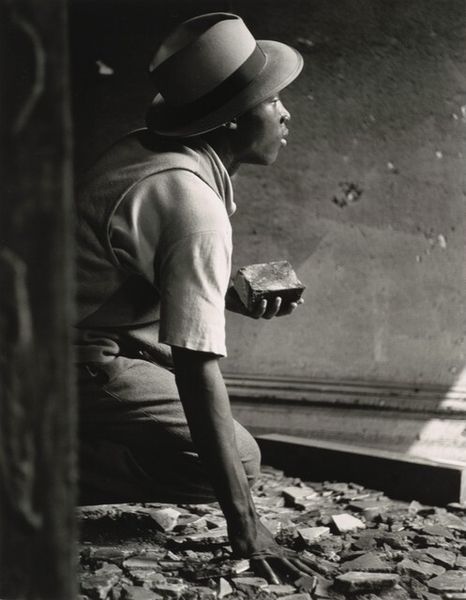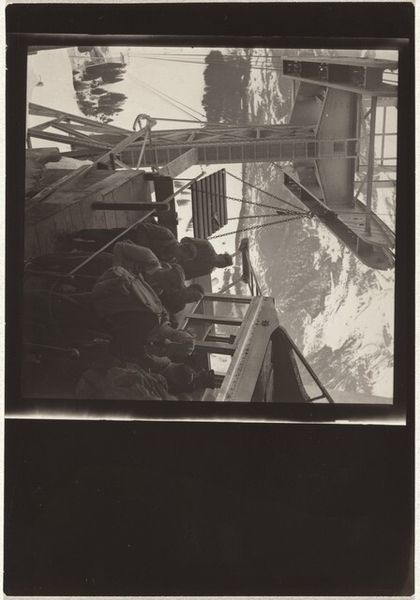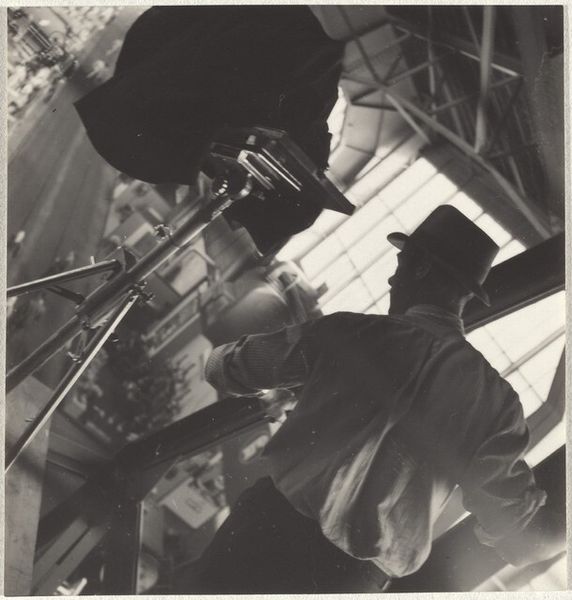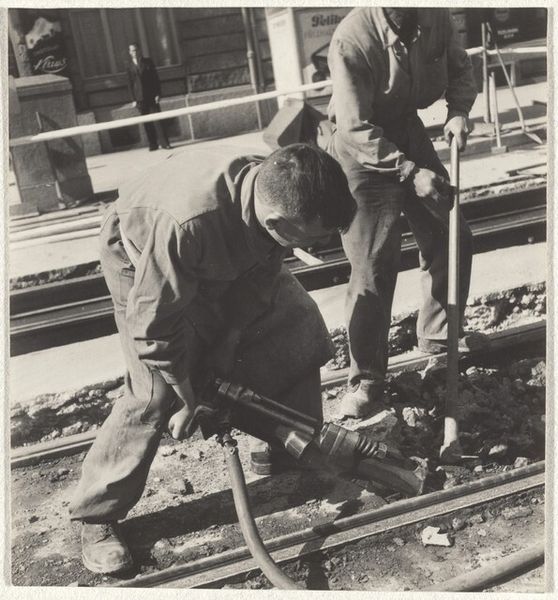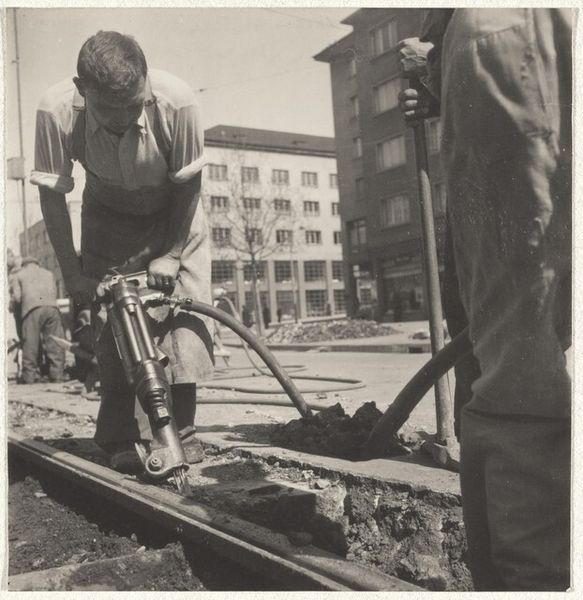
#
competition photography
#
wedding photograph
#
photo restoration
#
wedding photography
#
outdoor photograph
#
outdoor photo
#
historical photography
#
couple photography
#
outdoor activity
#
celebration photography
Dimensions: sheet (trimmed to image): 22.3 x 17 cm (8 3/4 x 6 11/16 in.)
Copyright: National Gallery of Art: CC0 1.0
Curator: This is Robert Frank's photograph, "Laborer--People," created between 1941 and 1945. Editor: It hits you immediately, doesn’t it? The raw physicality. There's a potent mix of exhaustion and defiance in that figure drinking from the bottle, juxtaposed against the stark, almost brutalist architecture in the background. Curator: Absolutely. The stark lighting intensifies that contrast. What's compelling here is Frank’s capturing of a universal archetype: the worker, worn down but unbowed. Note how the composition emphasizes the tools—symbols of labor—almost like extensions of the figure himself. There’s a sacramental quality to the man's pose as he drinks. Editor: I see that connection, but it feels more like an act of resistance than something sacred. Look at how the buildings almost seem to oppress him. To me, that bottle isn't about nourishment but an assertion of his own needs within a system that likely disregards them. It's a subtle rebellion captured in a single frame. It is also of that era—pre-war perhaps and filled with youthful arrogance and machismo. Curator: An intriguing interpretation. I think there is an inherent humanism. Notice that his eyes are cast upwards. Drinking might seem a solitary act, a private moment of solace and maybe, transcendence. This pose connects him to centuries of symbolic imagery, the human striving for something more, that hope or solace can come from faith, as the laborers are people connected to land, and connected by hard work. It does not come as an assault. Editor: But it is impossible to view any depiction of labor outside the complex web of socioeconomic conditions. Frank may have been focusing on the individual, but can we truly isolate this worker from the history of exploitation, alienation, and struggle embedded in that very act of physical labor? The photo to me captures more a cry, an anguished thirst—not a peaceful meditation, not here. Curator: A powerful point. The photo definitely offers an aperture into that whole complex story, doesn’t it? I do agree it’s this tension, the play between individual experience and collective history, that renders "Laborer—People” so captivating, a photo open for reflection. Editor: Exactly. And its enduring relevance stems from its unflinching portrayal of that constant tension. It’s like this photograph never allows us to be fully at ease, which is something I truly appreciate.
Comments
No comments
Be the first to comment and join the conversation on the ultimate creative platform.
